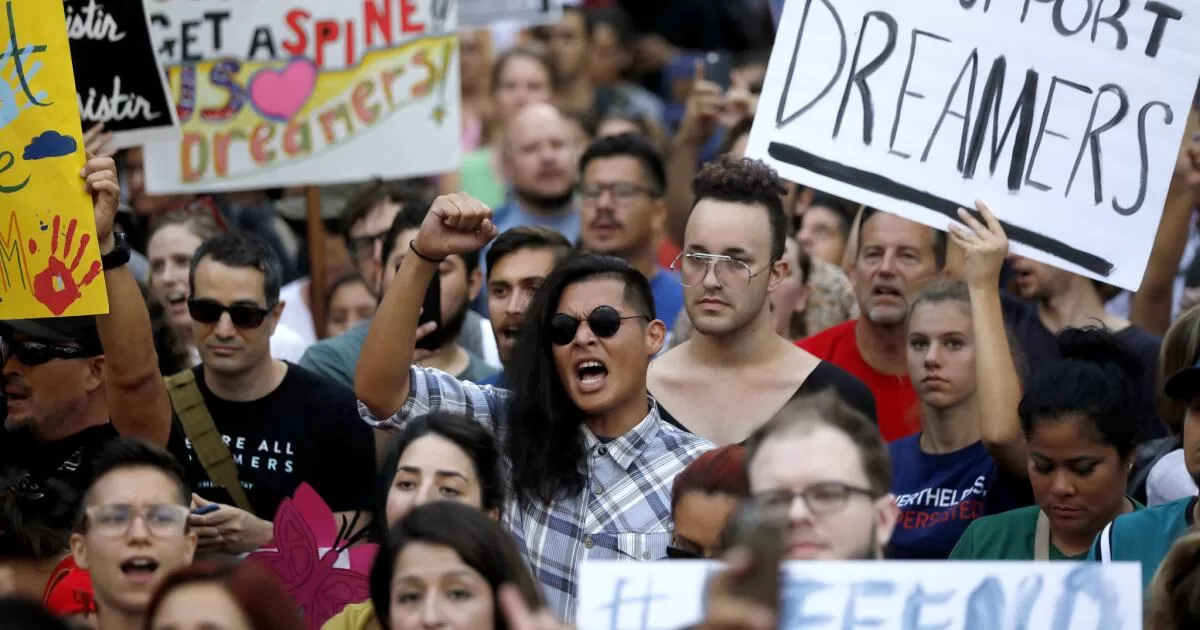June 2012 — Janet Napolitano, the secretary of Homeland Security under President Obama, issued a three-page memo announcing a policy of “exercising prosecutorial discretion with respect to individuals who came to the United States as children.” In most instances, “these individuals lacked the intent to violate the law” when they entered the country illegally, she said.
Under the new program, Homeland Security said it would “defer” deportation action against qualified individuals “for a period of two years, subject to renewal.” During that time, individuals would be permitted to work legally.
To qualify, the individuals had to: have come to the United States under age 16; not be above the age of 30; have “continuously resided” in the U.S. for at least five years; be in school or had graduated, or had served in military; have not been convicted of a “felony offense or significant misdemeanor.” More than 700,000 young people came forward, passed a background check and qualified for relief from deportation under the program.
November 2014 — Jeh Johnson, President Obama’s secretary of Homeland Security in his second term, announced a significant expansion of “deferred action” that would extend relief to as many as 4 million parents of U.S. citizens or permanent residents.
“The reality is that most individuals” who would qualify for relief “are hard-working people who have become integrated members of American society,” he said. This became known as Deferred Action for Parents of Americans, or DAPA.
February 2015 — U.S. District Judge Andrew Hanen in Brownsville, Texas, issued a nationwide injunction to prevent the DAPA policy from taking effect. He was acting on a lawsuit brought by lawyers for Texas and 25 other states, all of which had Republican governors. They had alleged the DAPA policy was illegal because Congress had not granted such broad relief.
The 5th Circuit Court by a 2-1 vote affirmed the judge’s order in November, and the Supreme Court did the same based on a 4-4 vote in June 2016. Justice Antonin Scalia had died a few months before, but the tie vote had the effect of affirming the 5th Circuit’s decision.
September 2017 — Elaine Duke, the acting secretary of Homeland Security for President Trump, issued a memo announcing the “rescission of Deferred Action for Childhood Arrivals.” Though this program had not been challenged before, she cited a letter from then Atty. Gen. Jeff Sessions, who asserted this “open-ended circumvention of immigration laws was an unconstitutional exercise of authority by the Executive Branch.” She also cited the rulings by the 5th Circuit and the Supreme Court.
January 2018 — U.S. District Judge William Alsup in San Francisco issued a nationwide order blocking the Trump administration’s repeal of DACA. He said it was “based on a flawed legal premise” that the Obama-era policy was illegal. The judge acted on lawsuits brought by California and several other Democratic-led states. Judges in New York and Washington, D.C., later handed down similar orders, and the 9th Circuit Court in San Francisco affirmedAlsup’s order in November.
June 2019 — The Supreme Court announced it will hear the Trump administration’s appeal in three consolidated cases, led by the California case known as Department of Homeland Security vs. Regents of the University of California. The court agreed to decide “whether DHS’s decision to wind down DACA is lawful.” The oral arguments were scheduled for Nov. 12, but a decision is not likely until early in 2020.
